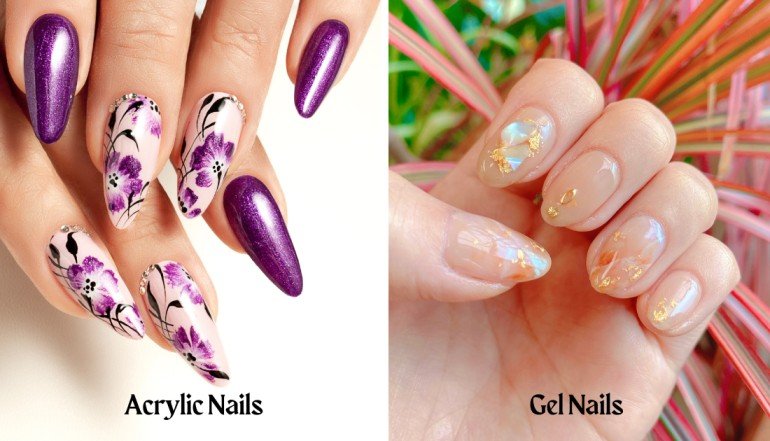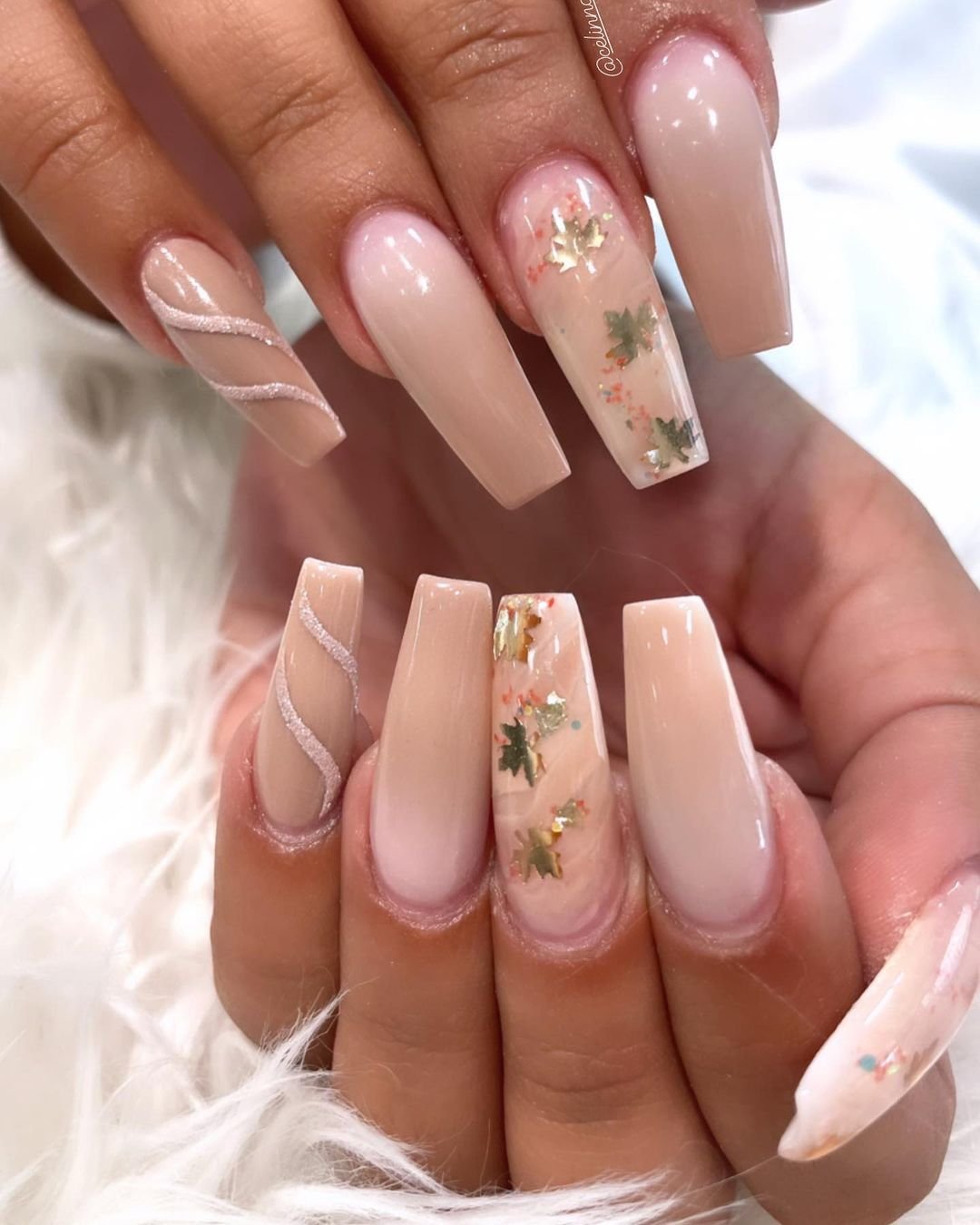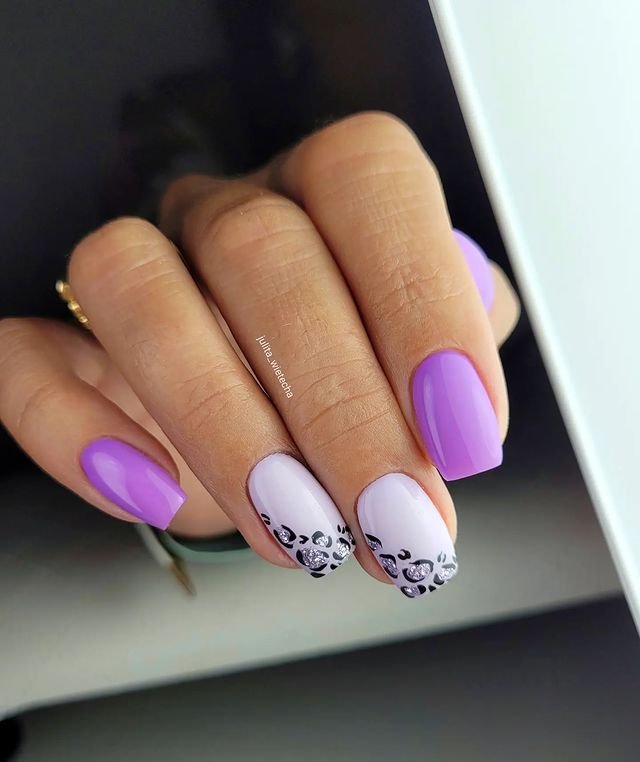False nails have been around for decades, but they’ve had a resurgence in recent years thanks to a combination of celebrities, social media, and our recent nail art obsession. They are difficult to replace since they are lovely, stylish, and boost your self-confidence.
False nails may also produce a wider, more uniformly shaped canvas for individuals who adore detailed nail patterns. They are great for those wishing to add length and durability to their nails. False nails can also create a larger, more evenly shaped canvas for those who love intricate nail designs.
The recent variations of false nails have made getting your nails done feels like a chore because there is too much choice. There are a lot of variations of false nails, but at the moment, Gel and Acrylic nails seem to be the most popular.
Gel vs Acrylic Nails – Overview

Acrylic Nails
Acrylics are ideal for someone who loves having long nails but has trouble growing them out because, to be honest—we do so much with our hands that it’s not always easy to get the nail length we want. Acrylic nails are false nail tips glued to your natural nails and held in place with a thick, durable coating that can be customized with any nail shape, color, or art you want.
Creating acrylic nails involves mixing a liquid with cuticles with a powdered acrylic product. The two products (a monomer and a polymer, respectively) create a soft ball that may be shaped like a nail.
This acrylic substance grows stronger after being applied to a client’s nails by a nail technician.
It can then be polished and filed to the customer’s preferences.

Your technician should start your acrylic session by washing, soaking, and filing your natural nails once you’ve decided on the form, length, and color of your new acrylic nails. They would add fake tips later if you asked for your nails to be lengthened.
Before glueing the acrylic nails to all of your nail beds, nail technicians will first use an adhesive. The acrylics are then shaped and sanded. Finally, they apply any extra polish, accents, or nail art you requested while making the appointment. Depending on your personality, you might even do your acrylic nails at home.
Gel Nails
Since gel nails are often grouped in the same type of beauty treatment as acrylic nails, it’s easy to confuse the two or even mistake them as terms that could be used interchangeably. In reality, they’re quite a bit different.
Like a typical manicure, gel nail polish begins with cuticle trimming, moderate hand soaking, nail clipping, and complete hand washing. The paint is where things differ: you’ll begin with a base coat layer that prepares your nails for the gel, a unique type of polish that dries under UV light rather than by air like other polishes do. You expose your hand to the Ultraviolet light for 40 seconds after applying each layer of paint. The final step will be for the technician to apply a glossy topcoat using a UV light.

Gel nails are known for their longevity, often lasting way longer than a regular manicure, and their versatility. They not only last longer, but also, when you wear them, they will appear harder and shinier. One of the biggest myths about gel manicures is that they’re bad for your nails. In reality, how you remove gel polish can be damaging. If you’re removing gels yourself, the one thing you should never do is pick or peel the polish off.
Differences Between Gel and Acrylics
Though gel nails are a type of acrylic nails, their differences are more than their similarities. There are countless appealing choices available, including gel and artificial nails. It is always good to know what you’re going for before you do it. There are a couple of differences between gel and acrylics.
The Make
Acrylic nails are shaped from a powder mixed with an activator solution, dabbed onto a prepared nail, and patted with a brush to the desired shape before it is set up. The result is fairly thick, translucent, and matte. It can be painted with regular nail polish, which lasts until removed.
So long as the polish is removed with a non-acetone remover, the acrylics remain intact. As the nails grow, a “fill” is required every 2–3 weeks over the exposed part of the nail near the cuticle.
Gel nails are brushed on from a little gel pot (“builder” and top coats are clear, subsequent coats can be any color). Each color is set by exposing it to a blue LED light. When the nails grow, the gels need to be soaked with acetone and then scraped off when softened.
Gels cannot be polished with standard nail polish—you must use a “no-chip” gel polish. They will not chip, though they can lift if your hands are in hot water a lot. (If they lift, sometimes they fall off by themselves). They are shiny regardless of what color you apply.
The Appearance
While gel manicures look just like your regular old mani, the added benefits are that they last longer and are super shiny Plus, the beauty of a gel manicure is that anyone can get one, whether your nails are super short or cardi-b long. Gel nails offer a more glossy, natural appearance, whereas acrylic is more sturdy and durable than gel. If not properly applied, Acrylic nails tend to look unnatural.
Application Process
Gel nails can be done with natural nail plates or nail extensions. Gel nail extensions are used with a gel manicure when you need long nails. The gel nail polish is applied in three layers: base, builder, and top coat. Each layer is cured under UV light for a few minutes. Afterwards, the nails are filed, polished with a color of choice, or designed with nail art.
Acrylic nails can be applied on the natural nail bed or with extensions. The main difference between gel nails is the liquid monomer and powder polymer product. Acrylic sets naturally in minutes without the help of any equipment. As such, acrylic nails typically dry faster than gel nails.
Removal Process
While gel nails are removed by filing off the gel from the nail, acrylic is removed by soaking the nails in acetone for some time, usually twenty minutes. They both should be done by a professional nail technician, though, to be safe.
Cost
Though not a considerable difference, gel nails cost more than acrylics. The cost largely depends on factors such as where you’re doing it, what design you want, etc.
Flexibility
Gel nails have a natural finish and are lighter on the nails. The result may be that they are not as strong as acrylic nails, but they cause less damage to your nail bed in case of breaking. This makes them more flexible to wear without fear or pain from accidents.
SAFETY TIPS
- Have proper education on nail art before deciding to do it yourself. If not, it is advisable to go to a technician.
- Sometimes take breaks after recent nail procedures to ensure that your nail beds and cuticles rest.
- UV lights do have negative effects if used too frequently.
- Though they have differences, both gel polish and acrylics are great options. Depending on your preferences and what aesthetic you’re looking for. The end goal is to look good, after all.
FAQs
Which is Better for Your Nails, Acrylic or Gel?
Compared to acrylic, gel nails are better for your nails’ health and have a lower propensity to harm the natural nail or nail bed. In addition, gel nails feel more organic and flexible than artificial ones, making them less prone to break if you accidentally bump against something.
Which Type of Nail, Acrylic or Gel, Lasts the Longest?
Due to their chemical makeup and greater resistance to breaking, acrylic nails stay longer than gel nails. If done correctly, acrylic manicures can offer a strong and durable layer of defence for the natural fingernails beneath. Due to their widespread availability, they are generally less expensive.
